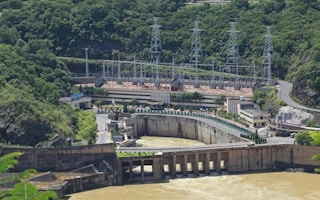“Charting the Upsurge in Hydropower Development” presents the key challenges and opportunities for the expansion of this sector from a current 1,000 GW capacity to the potential 2,000 GW capacity by 2050.
Hydropower is increasingly attractive to countries trying to reduce their reliance on dirty fossil fuels and boost energy security.
The report highlights various benefits of hydropower:
- Climate change mitigation –hydropower offsets fossil fuels and currently supplies 75 per cent of renewable energy worldwide
- Climate change adaptation – it provides water storage capacity is useful to alleviate droughts and control flood
- Other use of reservoirs – for irrigation, navigation and recreation
- Storage and base load – it provides efficient management of the electricity system and to support other renewables such as solar and wind energy (hydropower, including pumped storage, currently accounts for 99 per cent of the global operational electricity storage).
But many challenges lie ahead for the continued expansion of hydropower, including the need for greater cross-border and regional management of water resources and the need for more sustainable projects.
The report also emphasises the need for sustainable hydropower projects that consider the environmental, social as well as the technical and economic aspects of projects, along the lines of the Hydropower Sustainability Assessment Protocol, a best practice framework for the industry.
Further, the report details issues such as project delays, climate resilience, public acceptance, sedimentation, water consumption and greenhouse gas (GHG) footprint of dam building.
The report calls for the governments and actors involved to consider the potential negative effects on neighbouring countries or states and urges countries to use the opportunity to cooperate at a regional level.
Asia has the largest unutilised potential – making it the leading market for future hydropower development. China already accounts for 26 per cent of the global installed capacity far ahead of any other country.
China will continue to take the lead, not just at home but beyond its borders in Laos, Cambodia, Myanmar and other Asian countries. The Mekong river in South-east Asia is one example of where regional powers have taken unilateral decisions to advance with hydropower projects solely to suit their national interests.
The worrying trend of growing thermal power generation and dwindling water availability is illustrated in China, where as of 2012 over 50 per cent of total proposed power generation capacity was located in areas with high or extremely high baseline water stress, the report notes.
The report advises governments to take the initiative on addressing the vicious cycle of increasing water and energy demand.
Concentrated development is also expected to continue in India, Turkey, Bhutan and Nepal.
However hydropower projects have been met with resistance, particularly in India. Those opposing projects argue private and government actors have ignored the potential changes to river regimes and the ecosystems the projects would bring.










